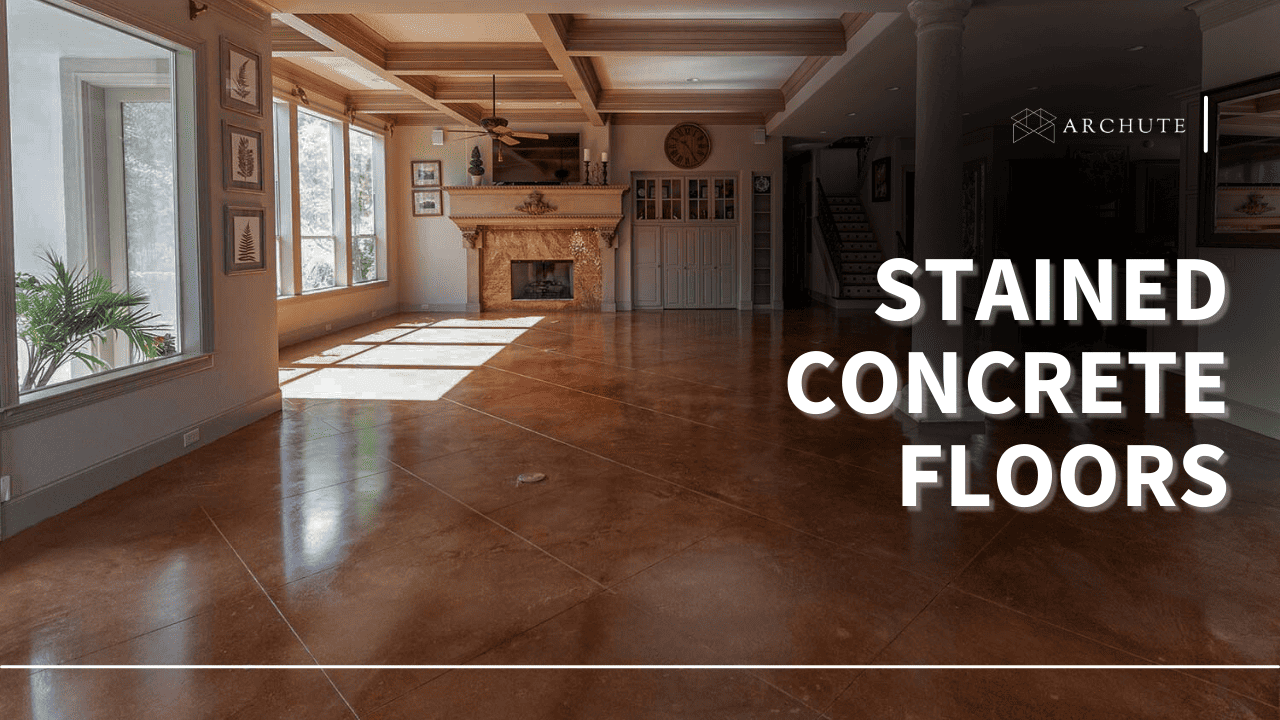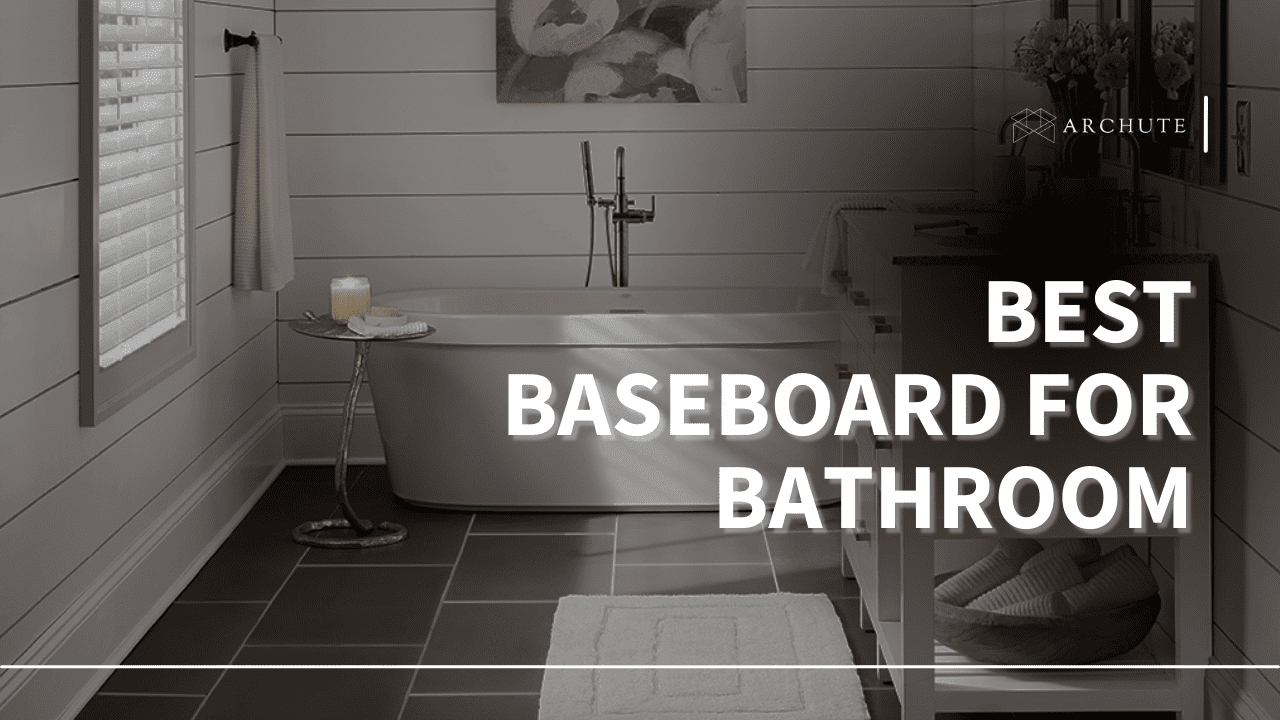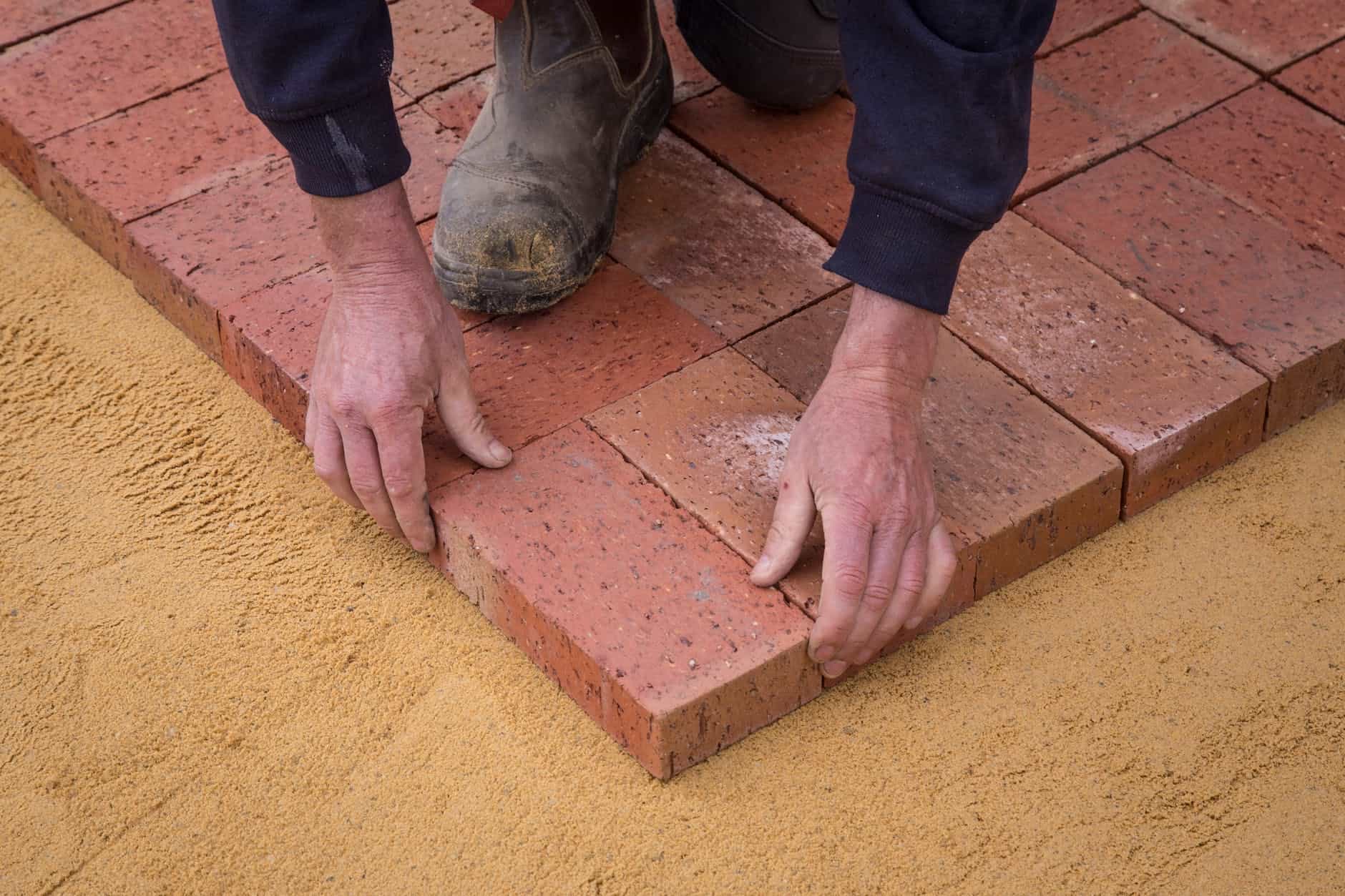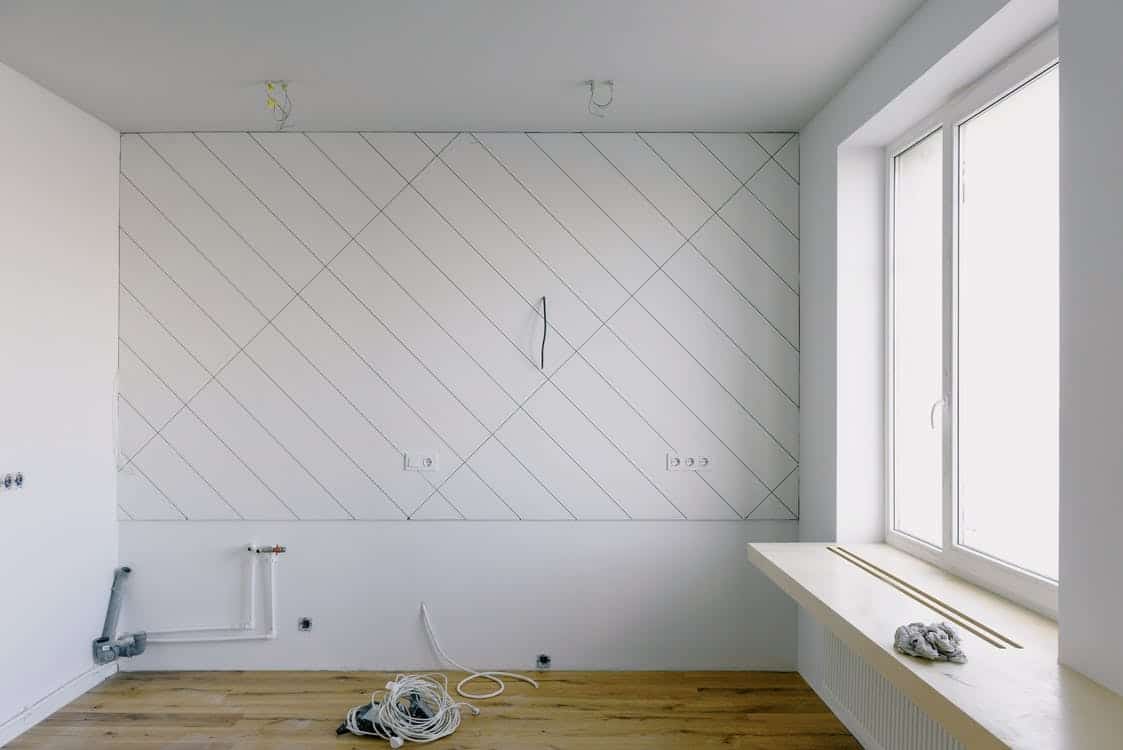Just like their natural stone counterparts, concrete floors can be stained to add color and character. Stained concrete floors are a great way to give your business or home the perfect look and feel. They can add character and sophistication to any space and are one of the most affordable ways to do it.
Benefits of Stained Concrete Floors

Image Source: craftsmanconcretefloors.com
1. Easy Maintenance
Concrete is a great flooring material. It’s very hard, so it does well to protect your floors from outside elements such as water and dust. Stained concrete is a little different from regular concrete, but it can provide the same durability and protection. When you’re ready to have your floors stained, you must choose a company that has experience with concrete. Not all companies are the same, and not all of them will be able to do a good job.
Besides the fact that stained concrete is beautiful, it’s also incredibly easy to maintain. Since regular maintenance isn’t necessary, you don’t have to worry about cleaning up spills or dealing with mold. You can just enjoy your beautiful floor!
2. Cost-Effective And Durable
Stained concrete floors are extremely durable and low-cost. The days of homeowners needing to worry about replacing their floors are long gone. Concrete floors can be stained any color you want, even patterns. You can have these floors professionally installed or stain them yourself. It is a very easy job that requires minimal tools and little skill.
3. Long Life-Span
Stained concrete floors are growing in popularity. Like everything else, they have their proponents and detractors. The question is whether or not the floor will last more than a few years.
Concrete floors last for decades, but if you have them stained, you may be shortening the life of your floor. When you add stain to the concrete, it changes the chemical makeup of the floor to give it color. This can lead to cracks and other problems down the road.

Image Source: modernconcretefloors.com
4. Very Customizable
Just like a carpenter can customize a home with custom wood floors, you can customize your home or business with stained concrete floors. You are not restricted to using only one color. There are many stain options from which to choose.
You may also want to consider adding concrete overlays and other decorative concrete overlays to add additional interest to the surface. Overlays can be applied to existing concrete floors or new concrete slabs and can be installed over a variety of different surfaces, including poured concrete, thin-set mortar, plywood, concrete block, and even directly over dirt.
5. Eco-Friendly
Stained concrete floors add a very warm and natural accent to any room. They are also popular for their durability and affordability when compared to other flooring options. Stained concrete is also an eco-friendly flooring option because it uses recycled water, is easily recycled, and is made from products that can be reused to make new concrete.
Stained concrete floors are a great alternative to oil-based products. The best part is that they can be made, which is good for the environment and keeps costs low. Stained concrete floors emit less carbon dioxide than traditional building materials, making them more eco-friendly.
Stained concrete floors are fairly new to the market and can be a great addition to any home.
Disadvantages of Stained Concrete Floors

Image Source: directcolors.com
1. Prone to Imperfections
Whether you’re using an acid concrete stain or a water-based stain, it’s vital to note that you may not always get the results you want on your concrete surface. Sure, if you’re using professionals to stain your concrete floor, the results may be better, but it’s not always a guarantee. This is why we say that stained concrete surfaces are prone to imperfections.
In addition to not getting your desired results on your concrete floor, staining doesn’t fix the existing imperfections on your concert slab. In fact, you’ll likely see the imperfections on your concrete slab much more after you’ve stained it.
For example, if your concrete slab or floor has cracks or parts that are noticeably uneven in color, these will pop out more after staining.
We recommend investing in fixing your concrete floor beforehand and doing the necessary preparations before commencing the concrete staining.
2. Unsuitable DIY Project for Commercial Spaces
No matter how much you love doing DIY projects for your business, don’t do this when it comes to staining your concrete floors. Why?
Because staining concrete floors requires a steady hand, specific tools, and vast experience with handling concrete stains, you will have mere seconds to draw your pattern after you pour your concrete stain on the surface.
This means that if you make a mistake, you won’t be able to fix it, and you and your customers will have to look at that concrete floor forever.
Therefore, to avoid any disappointments and extra expenses, consider getting an experienced contractor from the very beginning.
3. It’s Purely Aesthetic
You don’t enhance performance when you stain concrete floors. The strength, durability, and even resistance to spills remain the same after you apply your water or acid stain. Therefore, if you want to improve the quality or performance of your concrete floor, consider combining it with other methods that do that.
Polished Vs Grind And Sealed Concrete Finishing

Image Source: craftsmanconcretefloors.com
Stained concrete is an affordable, beautiful flooring option for many homeowners. But when it comes to sealing stained concrete floors, there are some significant differences between the two main types of sealers: polished and sealed.
Sealing stained concrete floors will protect your investment for years to come, but you need to choose the right sealer for the job to get the best results. To choose whether you should polish or grind and seal concrete floors, you should know these kinds of floors have different levels of protection.
By understanding these differences, you can decide which type of stain and sealer is right for your home or business.
Polished Concrete Floors:
-
- Smooth to the touch
-
- Can be polished with a high-speed buffer and sealed with a concrete sealer
Sealed Concrete Floors:
-
- Have a matte finish
-
- Are sealed with a special coating that is applied to the floor with a spray gun
-
- The coating can be polished to a high shine with a concrete polisher
Styles of Stained Concrete Floors

Image Source: solcrete.com
1. Acid Concrete Stains
Acid stains are a popular choice for most users because of their earthy and natural feel. These concrete stains give your floor a marbled or variegated look that allows you to enjoy it in its natural state.
You can choose from various earthy tones when dealing with acid stains, including greens, browns, blues, and tans. You get an organic look when using acid stains because they react with the minerals in the concrete to give you a unique look that you can’t get with other stains.
These concrete stains are great for concrete slabs that have been around for decades or have imperfections that you want to hide. This is because these stains do a good job of making these imperfections less visible.
The drawback with these stains is that the variety of colors is limited. So, if you want more options or you want your colors to pop on your concrete floor, consider other stains.
2. Water-Based Concrete Stains
Go for a water-based concrete stain if you want a more modern and consistent look on your concrete floor. These stains are user-friendly, eco-friendly and come in various colors that will make your floor stand out.
Because they don’t react with the concrete, you’ll find these stains create a very uniform appearance on your floor. You can use these stains to create designs on your floor, such as logos and other personal patterns. Plus, you can explore concrete flooring trends for inspiration.
One thing to note with water-based stains is that you should apply a high-quality concrete sealer once you’re done to add durability. Feel free to re-apply the stain as much as you’d like, especially when dealing with high-traffic areas.
3. Dye Stains
Concrete dyes are marvelous for outdoor spaces because of their resistance to fading. Similarly to water-based stains, you can use concrete stains to draw patterns because they come in a variety of colors. We recommend getting a professional to help you with this style of concrete stain for the best result.
Final Thoughts on Stained Concrete Floors
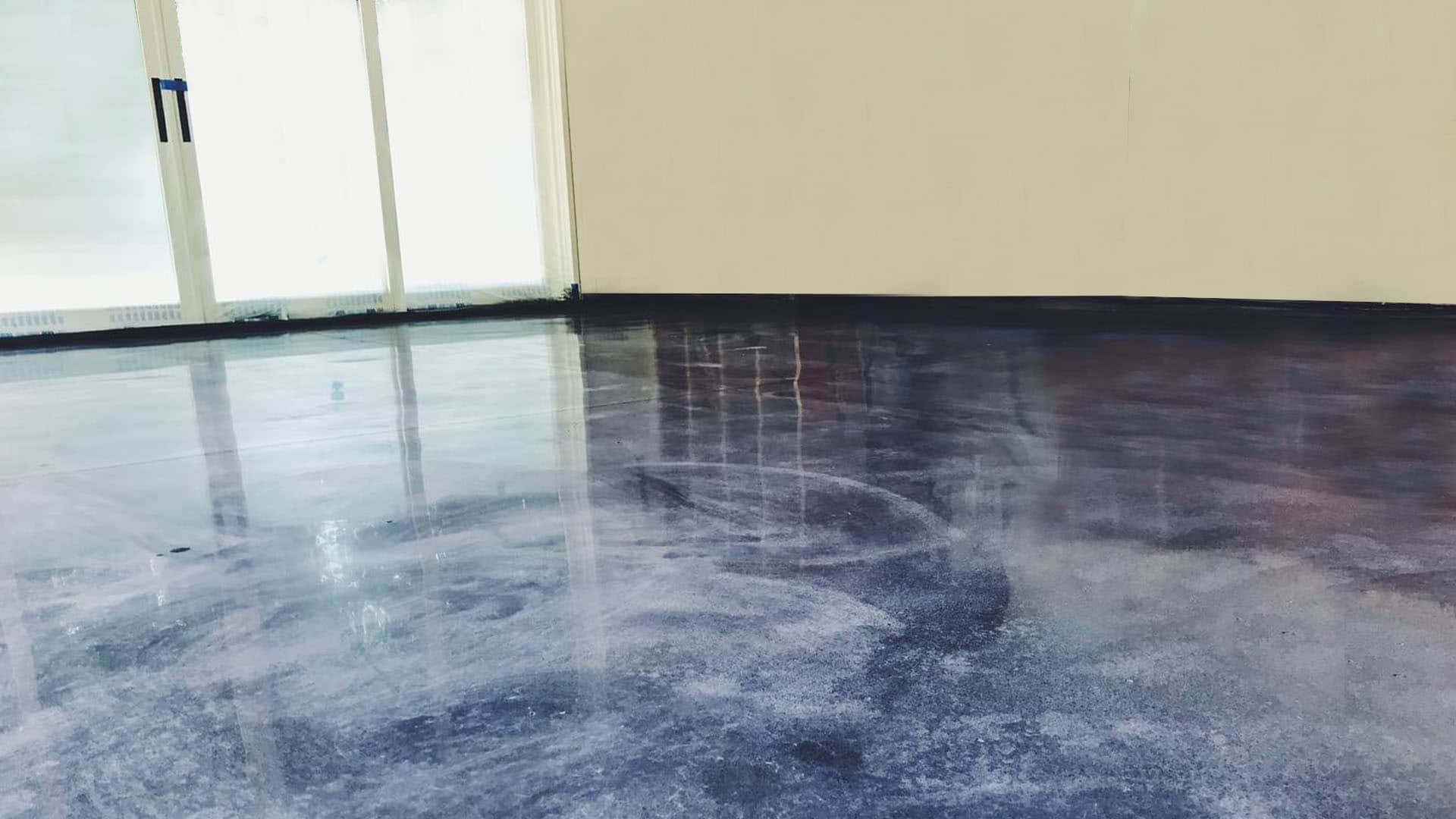
Image Source: concrete-science.com
To summarize, there are many benefits to having concrete flooring installed in your home.
The great thing about stained concrete flooring, in particular, is it provides a unique look, can be easily customized, and it is extremely durable. However, you must properly care for your new flooring for the best longevity possible. Stained concrete floors are a beautiful way to add value to your home, and they last for decades. They can be installed in just about any area of your home, from the basement to the living room.
Frequently Asked Questions About Stained Concrete Floors

Image Source: craftsmanconcretefloors.com
1. Is stained concrete flooring a good option?
Yes. Stained concrete is a great flooring option because it is durable, versatile, cost-effective, easy to do and maintain, and makes for good DIY projects. You get to customize your concrete as you see fit without doing too much work, such as demolition.
Another great thing about stained concrete flooring, in addition to being easy to do, is that you can experiment with the colors and designs you wish. This sustainable and aesthetically-pleasing flooring option allows you to easily change things up in your space while still enjoying a stylish and low-maintenance concrete floor.
2. Is stained concrete cheaper than flooring?
Stained concrete is a cheaper flooring option than most traditional flooring options like tile or hardwood flooring. This method of flooring is also easy to maintain, which means that you’ll be saving money in the long run while still enjoying a stylish and durable concrete floor.
Nonetheless, note that the cost of stained concrete flooring depends on the type of stain you use, the area to be stained, the complexity of the design and patterns, and more. Therefore, ensure you take all these factors into account as you make your decision.

Image Source: angi.com
3. How long do stained concrete floors last?
Stained concrete floors can last for more than 2 decades without needing repair because they are durable and long-lasting.
However, kindly note that the lifespan of your concrete floor depends on factors like the style of stain used, the quality of the concrete floor, the amount of traffic in that area, maintenance, and more.
Some good maintenance practices to ensure your stained concrete floor lasts for ages include regular cleaning and resealing, using gentle cleaners and chemicals, and following any other instructions that come with the style of concrete stain, you choose to go with.
4. Is it better to stain or paint concrete?
The choice depends on the outcome you and the project you’re working on because these are two different types of coloring your concrete.
Stained concrete is great for enhancing the natural look of your concrete while adding some color. Depending on the style of stain you use, the intensity of the color will vary. If you want more color, consider going for a water-based concrete stain. Alternatively, if you want to maintain the natural nature of the concrete, acid stains will work.
Painting is great when you want to get a uniform look across your concrete floor or you want to cover up imperfections such as cracks on your concrete. The vibrant paint colors also allow you to create bold designs that you wouldn’t otherwise get with staining.
However, it’s also worth mentioning that staining is more durable and long-lasting than painting concrete. Therefore, the choice between which method to use is dependent on your preferences and project goals.
If you choose to paint your concrete floors, ensure that you choose the highest-quality paint for concrete floors.

